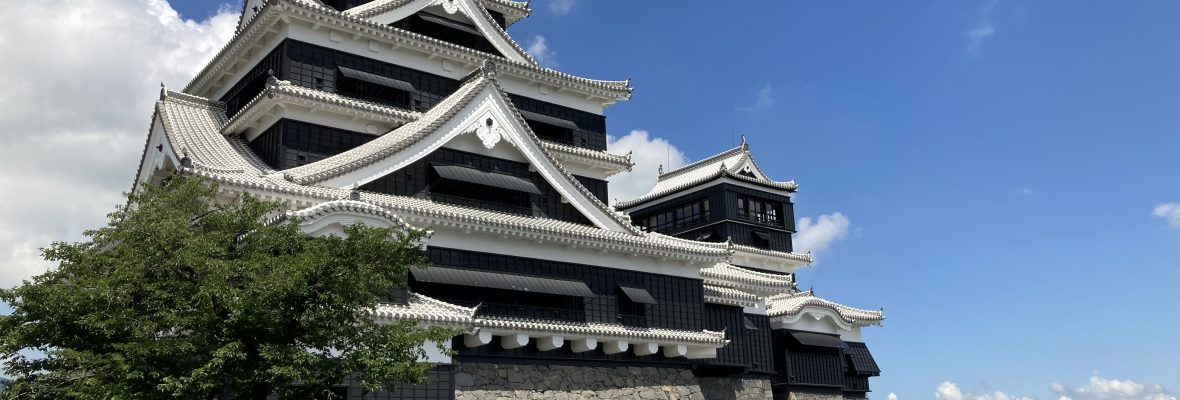Part 2. The Rise and Fall of the Ryuzoji Clan and the Bear of Hizen, Ryuzoji Takanobu. 龍造寺隆信 by Stuart Iles
Part 2 – Rise of the Ryuzoji
1530, Ouchi Yoshitaka’s powerbase was Sue prefecture just across the narrow straits of Shimonoseki. As the Ouchi gradually expanded their influence in northern Kyushu they still had to deal with the remnants of the Shoni clan and their vassals. Yoshitaka’s spies had told him that Sukemoto was rebuilding his army, therefore a major attack directly on Seifukuji castle was planned. The Battle of Tadenawate took place on August 15th, between the Shoni and Ouchi on the Chikugo plains, just south of the Sefuri mountains (modern day Kanzaki in Saga Prefecture). Sugi Okikazu, senior retainer of the Ouchi and Deputy Assistant Governor of Dazaifu and he was given the task of putting an end to Shoni Sukemoto, I read in Japanese resources that the army numbered about 10,000 whereas the Shoni defenders was only about a half of that, Ryuzoji Iekane himself with 1000 defenders. The Ouchi attacked and the battle looked to be over quickly. However, the Shoni, Ryuzoji and Baba defenders held their ground valiantly. The Ouchi attackers were just about to crush the last defenders, suddenly, about 100 cavalrymen appeared, swooped down into the Ouchi lines breaking through the unsuspecting attacking samurai. The cavalrymen all wore red bear pelts and became famously known as the ‘Red Bears’. The Ouchi were completely unprepared for a cavalry charge, and one would say overconfident of an easy victory. Iekane pounced at a small window of opportunity and rallied all of the defenders who charged the flustered attackers. Panic ensued among the Ouchi and two generals were killed which eventually lead to the Ouchi samurai fleeing for their lives. Despite having far greater numbers the Ouchi suffered the first major defeat in Kyushu. The Ryuzoji clan made a name for themselves among the Shoni retainers for their staunch defence and the famous Nabeshima Red Bears cemented their position as the primary cavalry force in the region.
Revelling in their victory, Shoni Sukemoto sent out his allies to recover lost lands from the Ouchi, even recapturing Hakata and Dazaifu, the jewels of Kyushu. However, although the battle of Tadenawate was a win, it came with a huge loss for Shoni military capabilities, both in manpower and resources. Ryuzoji Iekane was thought to have lost 800 of his 1000 warriors. Sukemoto was forced to rely on his retainers to do most of the recovery work. Over time, the balance of power in within the Shoni clan and especially in Hizen province gradually swayed to Ryuzoji Iekane, Nabeshima and their allies.
News of the Ouchi defeat at Tadenawate spread quickly throughout northern Kyushu. Over the following years, Ryuzoji and Nabeshima clans rapidly strengthened their position within Hizen, gaining more and more local support, both militarily and financially. Ryuzoji Iekane and Baba Yorichika took on much of the footwork which gradually increased their own power and influence. Thus, six years later when the Ouchi made their second major attack on Shoni homelands the Ryuzoji, Nabeshima, Baba and their retainers were reinforced and ready.
Ouchi Yoshitaka himself, Daimyo of Sue, along with senior retainer Sue Harukata marched their large army into Kyushu. However, Ryuzoji Iekane and his allies waited and initially, did not enter the battle. Several messengers were sent from Sukemoto to Iekane, yet he remained still. Isolated and massively outnumbered, Sukemoto accepted his fate and committed seppuku during the siege. Shoni Fuyuhisa (1510-1559), son of Sukemoto, managed to escape to the residence of a local lord and pleaded to Iekane for help. Iekane marched to the battlefield engaged the enemy, but the Ouchi troops quickly withdrew. There is a lot of speculation regarding Iekane’s actions. Some believe that Iekane knew it was a lost battle and did not want to sacrifice his own troops to a lost cause and he was fed up fighting under the Shoni. Others say that Iekane turned a blind eye because he did a secret deal with Ouchi Yoshitaka.
The Shoni clan barely survived once more through the young Fuyuhisa, but now loyal Shoni retainers became suspicious of Ryuzoji Iekane, especially Baba Yorichika who was a direct descendent of the Muto/Shoni. Once loyal allies, their relationship had declined since the victory of 1530. Not only that, Fuyuhisa was adamant that Iekane was a traitor to the Shoni clan for not helping his father Sukemoto sooner, openly blamed him for the death of the Shoni leader. An enraged Fuyuhisa conspired with his closest retainer to kill Iekane and the whole Mizugae branch of the Ryuzoji. The attack was supported by Shoni’s long-time ally, the Otomo of Buzen (Oita) who were also well aware of Iekane’s growing power and saw them as a possible future enemy in their own expansion in Kyushu.
End of part 2.


You must be logged in to post a comment.